コラム
落合憲弘
John Sypal
タカザワケンジ
なぎら健壱

Japanese national publication market-share BUT I assure you is one of vital importance for Japan’s photo culture. Sokyusha, located near Shinjuku-Gyoen and run by Michitaka Ota, has for years been steadily, quietly, and surely releasing photobooks of extreme quality- quality in production but also individual vision. A Sokyusha book in hand never feels simply like “a book”- - the combination of Ota-san’s editing genius and the spirit of each individual photographer results in something that hums with reverence for Photography itself. This quiet reverence for the clarity of the medium makes other concerns- embarrassingly trivial. Any trip to Sokyusha’s bookshop, with its piles of books, offers one the opportunity to experience this feeling many times over- and it was on one such trip in 2020 that I encountered Shoshi Okamoto’s Tokyo 1985.
Now, a Sokyusha book isn’t ever going to hit you over the head with Meaning and Purpose. Its existence is purpose enough- and the meaning is there in those pages, waiting for you to make sense of it as you like. Rare are books which have such particular respect for their viewers. Likewise, if you don’t “get” it, the book remains as it is, unaffected and unconcerned. One of the things I treasure about Sokyusha is its matter-of-factness in the idea that not everything has to be for everyone.
Tokyo 1985 shares many of the hallmarks of a Sokyusha publication- hardcover, an embossed foil inlay, crisp design, good printing, Ota-san’s deft editing, and a sort of clear, quietness which leaves room for the viewer’s feelings to grow towards the work.
And Tokyo 1985 grows on you.
Okamoto’s Tokyo- captured here while he was just 23 years old- is one of bright days full of seemingly “nothing” moments. Certainly, something happens in them- usually a few casual somethings- but not in that classical way that energizes a photographic composition. They’re made with a sort of lonely detachment and a spark curiosity. Some (elements, at least) are slightly humorous- almost witty. Yet these pictures aren’t particularly sentimental or the products of some sort of possessive desire for moments or subjects in them. Overall, the experience is (I imagine) akin to a stroll through Tokyo on a sunny weekday in 1985.
But what was it that made him take these outings out across the city?
Photo school. With the financial support of his mother, Okamoto enrolled in Tokyo Photographic College (Currently School of Visual Arts) and studied under two teachers: Masahisa Fukase and Daido Moriyama. (I know.) He states in his afterword for the book that students then were expected to shoot a tremendous amount of film, and this assignment became the impetus for his walks.
The book’s two-part text conclusion begins with a page written by Moriyama himself, and after a glowing review of the reality found in the prints he was shown pre-publication, notes that as a student, Okamoto, quiet and pale, never really showed anyone his pictures.
In fact, Okamoto himself states (via afterword title) that this book is “My Graduation Project: 35 Years in the Making”. Originally planning on becoming a photographer or editor, in his rather moving statement at the end of the book Okamoto says that he found employment in the computer software industry, and then, depression and drinking. The confessional nature of his essay lays bare his own perceived shortcomings and responsibilities. The pangs of compassion it elicits aren’t asked for, but for me anyway, unavoidable. The essay actually centers on the difficulties surrounding his mother’s advancing dementia- including how he came across his forgotten negatives while sorting out the house. Without giving too much away (or diluting the effect of his text through explanation), I’ll leave it at that. It’s certainly one of the more honest photobook texts I’ve read.
It’s interesting to consider all the people that went to photo school, made heaps of pictures, and then went on with their lives over the years. Okamoto’s situation brings to mind that of Kiichro Yoshimoto, coincidentally another one of Fukase & Moriyama’s students in 1984 (I don’t know if he and Okamoto were classmates) whose book of re-discovered negatives resulted in the wonderful Tokyo Timeslip 1984-2021.
Perhaps, as more similarly archived (forgotten!) negatives and prints get discovered, we’ll be offered further enjoyment through these yet-unpublished collections of the recent-ish past. Long live the 1980s!

今週のTokyo Photobook Tourで取り上げるのは蒼穹舎の本です。全国的に見て出版流通のシェアは少ないかもしれませんが、日本の写真文化にとって極めて重要な出版社であることは間違いありません。
新宿御苑の近くにある蒼穹舎は、大田通貴さんが経営する出版社で、長年にわたり、非常に質の高い写真集を、静かに、そして確実に発表し続けています。大田さんの編集の才能とそれぞれの写真家の精神が融合して、写真そのものに対する畏敬の念がうごめくのです。写真というものの透明性に対する静かな畏敬の念は、その他の事柄を恥ずかしくなるほどに些細なことにしてしまうのです。蒼穹舎に行けば、この感覚を何度も味わうことができます。そして、2020年、私は岡本正史さんの写真集『TOKYO 1985』に出会ったのでした。
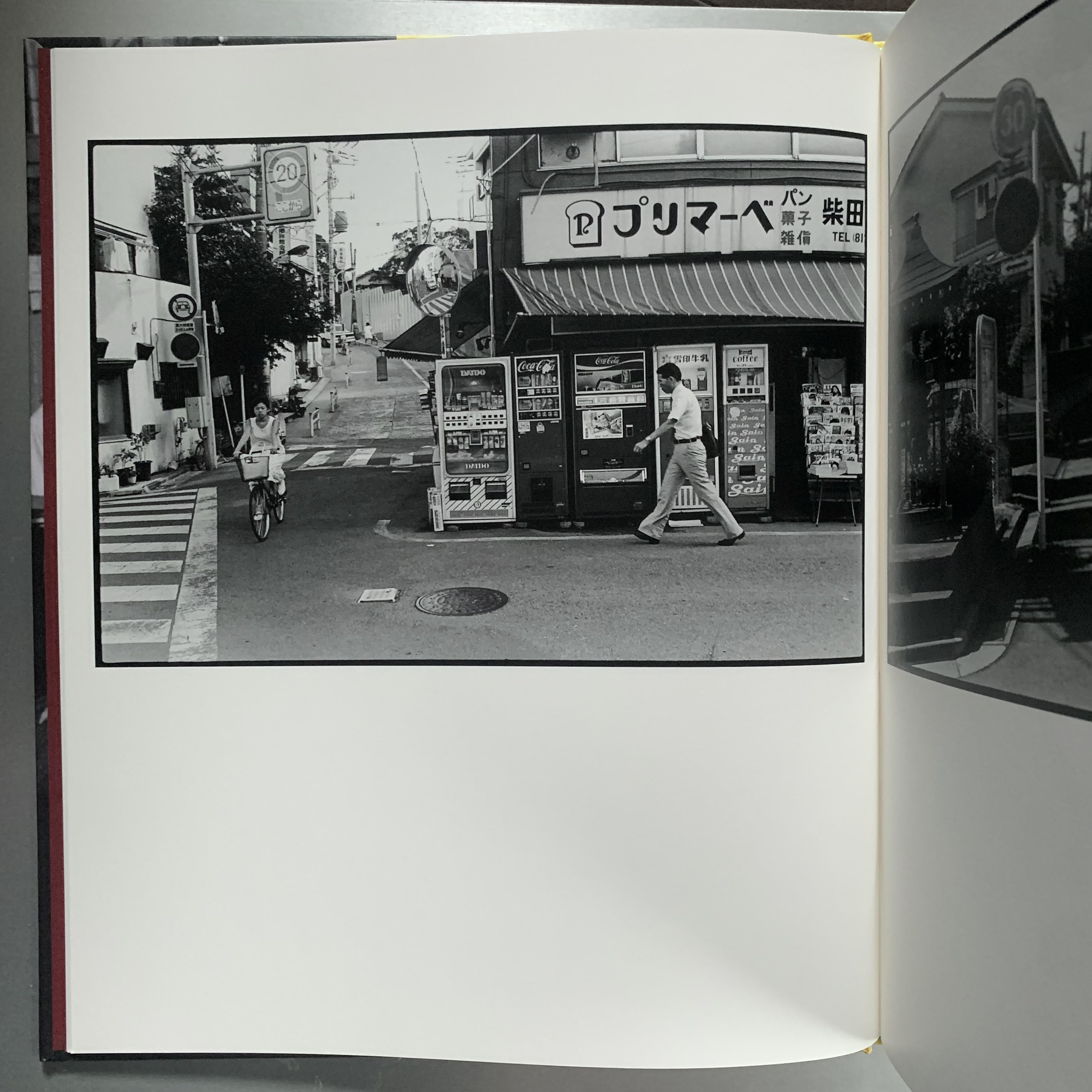
蒼穹舎の本は「意味」や「目的」について、頭を悩ませる必要がないと思っています。蒼穹舎の本は、その存在自体が目的であり、意味はそのページの中にあり、読者はそれぞれが好きなように意味を考えることができるのです。 これほどまでに読者に敬意を払っている本は珍しいです。蒼穹舎で大切にしていることのひとつは、「すべてが万人向けである必要はない」ということを、淡々と伝えていることです。
ハードカバー、エンボス加工された箔押し、鮮明なデザイン、良質な印刷、大田さんの巧みな編集、そして、見る人の気持ちを作品に向かわせる余地のある、ある種の透明感と静けさが特徴的な蒼穹舎刊行の『TOKYO 1985』。

岡本さんが23歳の時に撮影した「東京」は、一見すると「何もない」瞬間に満ち溢れた明るい日々でした。
確かに、ダイナミックなストリートスナップと比べたら、そこには「何気ない何か」があるのですが、それは写真の構図に活力を与えるような、古典的な方法をとってはいません。これらは、ある種の孤独な無関心ときらめく好奇心によって作られています。いくつかの要素として、少しユーモラスで、少しウィットに富んでいます。
しかし、これらの写真は、特に感傷的でもなければ、瞬間や被写体に対するある種の独占欲の産物でもありません。1985年の晴れた平日に東京を散歩するような、追体験ができるのです(と私は想像しています、当時の私はアメリカにいて、まだ6歳でした)。
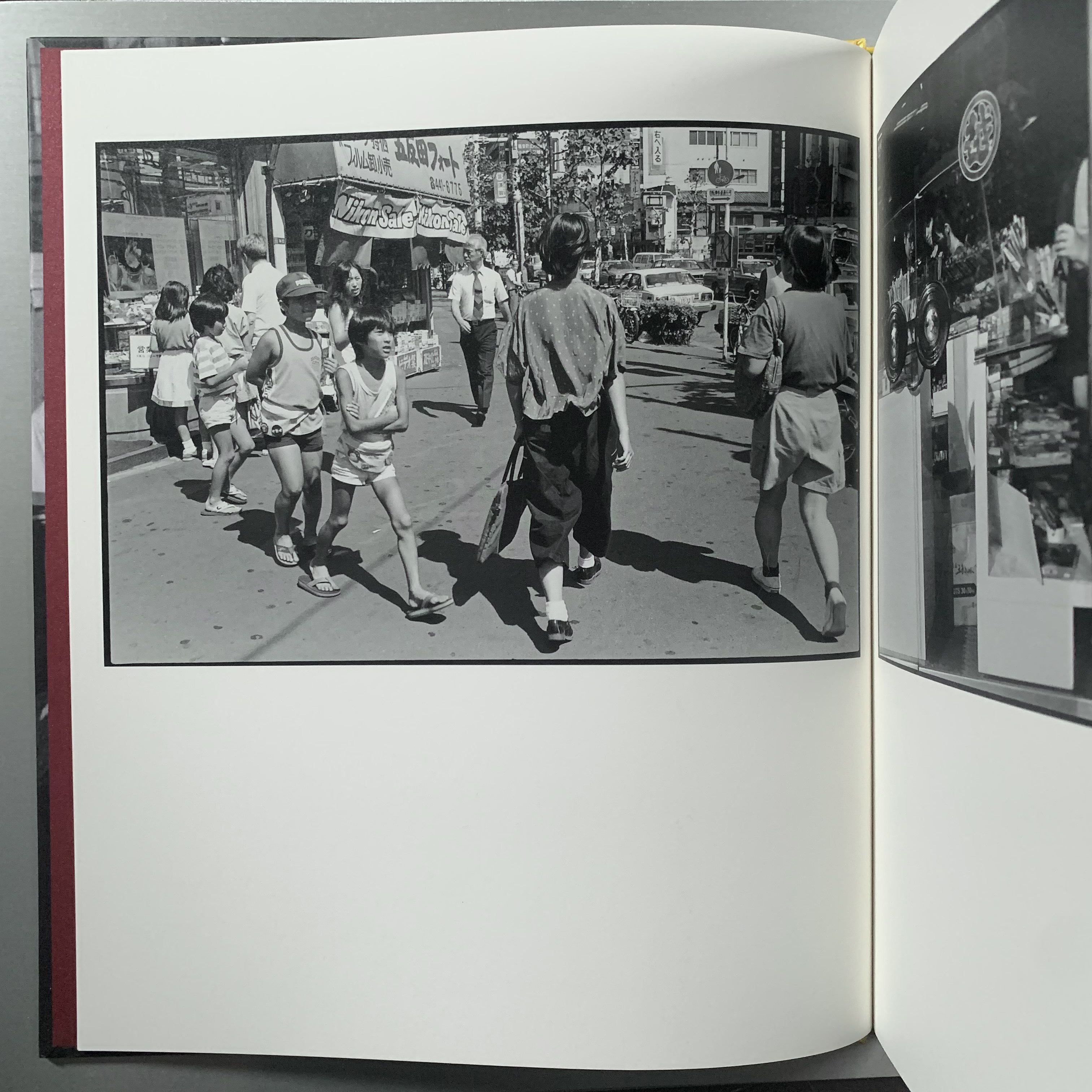
岡本さんがカメラを手に街へ出るようになったきっかけは、写真学校の宿題のためでした。 岡本さんは母親の経済的な援助で東京写真専門学校(現・東京ビジュアルアーアツ専門学校)に入学し、2人の先生に師事しました。深瀬昌久先生と森山大道先生です。
当時の学生は膨大な量のフィルムを撮影することが求められており、この課題が彼の散歩のきっかけになったと、この本のあとがきで述べているのです。
本書は2部構成になっていますが、まず森山さんが文書を書いたページがあり、出版前に見せてもらったプリントにリアリティがあったと絶賛した上で、学生時代、岡本は無口で、写真を人に見せることがほとんどなかったと記しています。
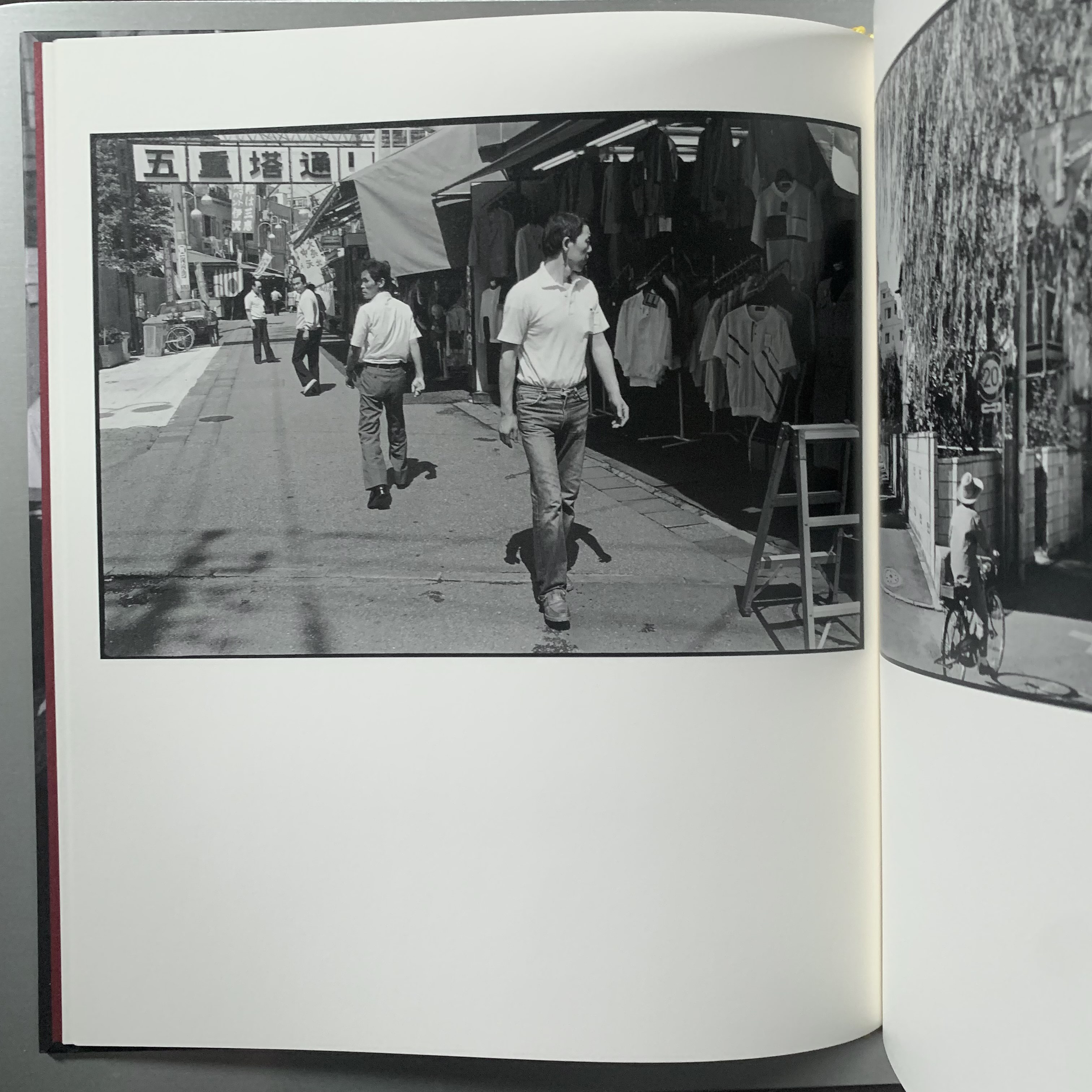
実際、岡本さん自身、本書を「35年越しの卒業制作」と(あとがきのタイトルで)述べています。 写真家か編集者になろうと思っていた岡本さんは、巻末の感動的な文章で、コンピュータ・ソフトウェア業界に就職し、その後うつ病を患い、お酒などでも辛い時期だったと述べています。この告白的なエッセイは、彼自身が認識していた欠点や責任をむき出しにしており、湧き上がる憐憫の情を感じざるを得ません。文中で認知症が進む母親の介護のために家の中を整理している時、忘れていたネガが出てきたという経緯も書かれています。
私が読んだ写真集のテキストの中で、最も正直なもののひとつであることは間違いありません。
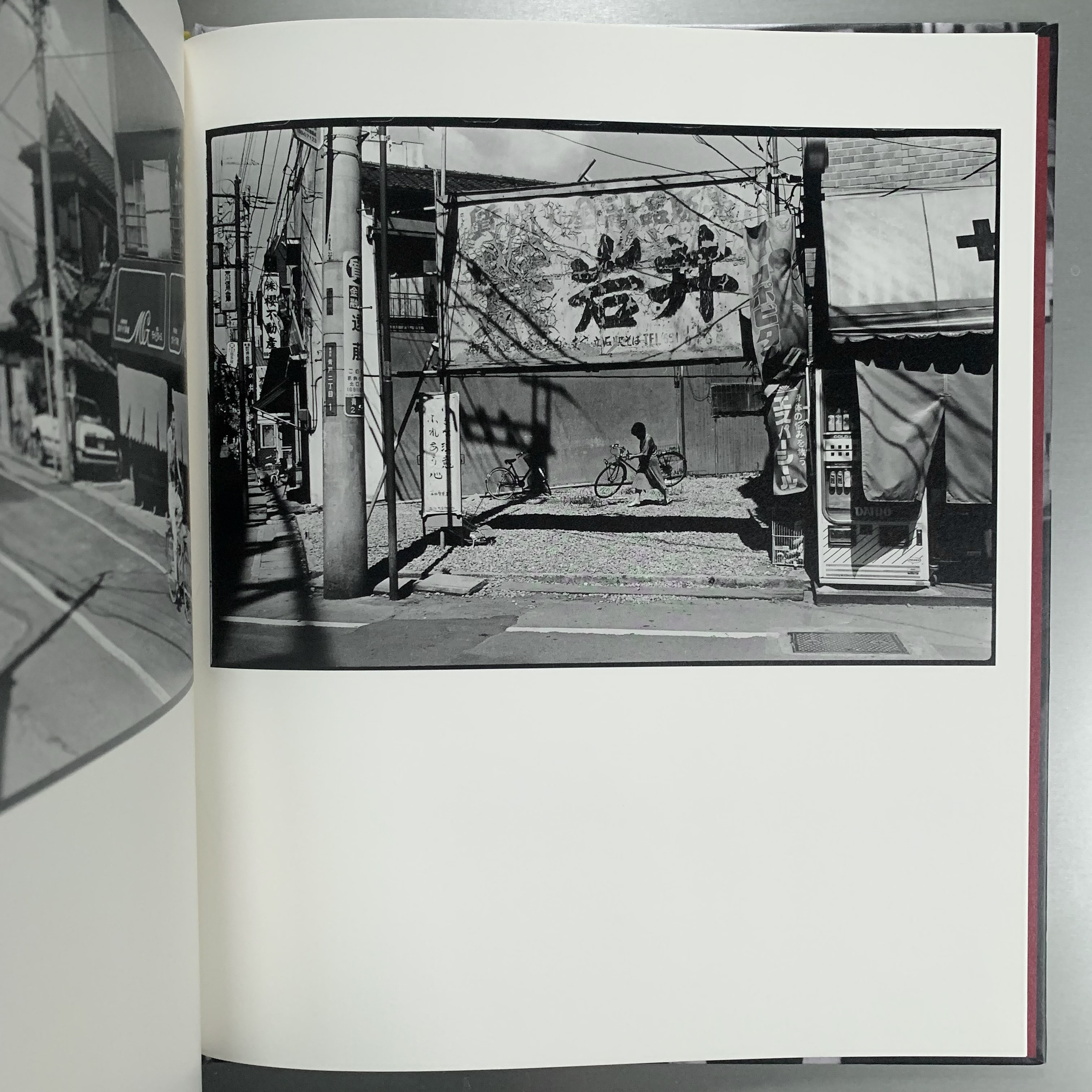
写真学校に通い、山ほど写真を撮り、そして何年もかけて自分の人生を歩んできた人たちのことを考えると、とても興味深いものがあります。 岡本さんの状況は、偶然にも1984年に深瀬先生と森山先生の生徒だった善本喜一郎さん(彼と岡本さんが同級生だったかどうかはわかりませんが)の再発見されたネガの本から、素晴らしい写真集『Tokyo Timeslip 1984-2021』が生まれたことを思い起こしてしまうのです。
今後、同じようにアーカイブされた(それか忘れ去られた!)ネガやプリントが発見されれば、このような未発表の近過去のコレクションをさらに楽しむことができるようになるかもしれません。60代の皆さん1980年代を、写真集で残しましょう!
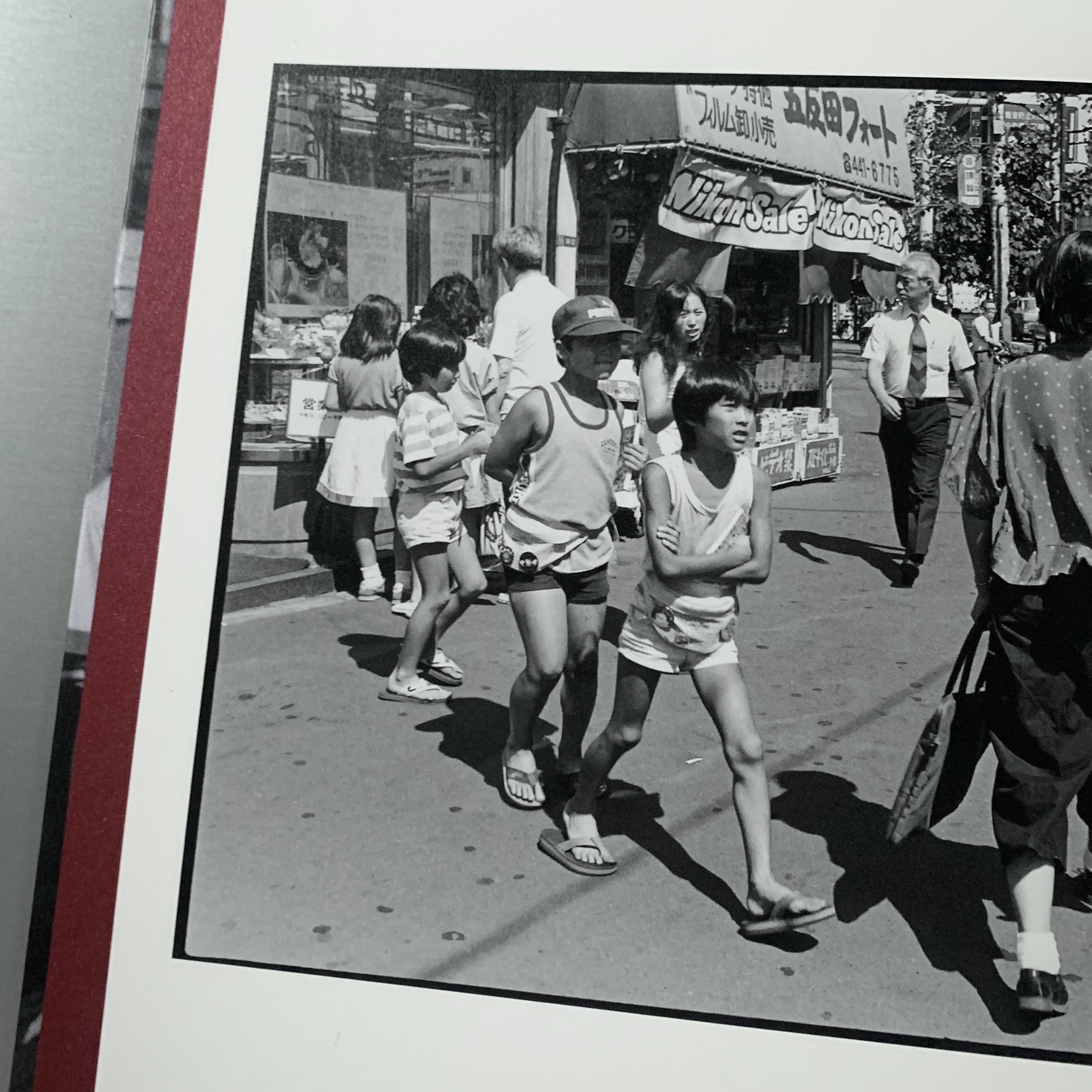
- 岡本正史『TOKYO 1985』
- 蒼穹舎 ・2020年1月・3,520円(税込)
- 272×229mm・72ページ、掲載作品60点・ハードカバー・300部
- 蒼穹舎
- 「日頃ぼくが写真について強く思っている、リアリティに裏打ちされた写真は、いかに時を経ようと、どんな時代になっていようと、それを見る人の目に、 いまのこととして生々しく突き刺さってくるのだ。(略)岡本君の写真集「TOKYO 1985」には、それら本質的なベースにしかと裏打ちされた確かさがある。」(森山大道 寄稿より)
 26 Duets? Duels? Near-overlaps of time and Space across Tokyo. 東京の時間と空間が重なり合う写真集ツアー
2025/04/04
26 Duets? Duels? Near-overlaps of time and Space across Tokyo. 東京の時間と空間が重なり合う写真集ツアー
2025/04/04
 25 Naoki Ishikawa "TOKYO The City Where I Was Born" 石川直樹『東京 ぼくの生まれた街』
2024/01/05
25 Naoki Ishikawa "TOKYO The City Where I Was Born" 石川直樹『東京 ぼくの生まれた街』
2024/01/05
 24 山内道雄 Michio Yamauchi『TOKYO UP CLOSE』
2023/10/20
24 山内道雄 Michio Yamauchi『TOKYO UP CLOSE』
2023/10/20


PCT Membersは、Photo & Culture, Tokyoのウェブ会員制度です。
ご登録いただくと、最新の記事更新情報・ニュースをメールマガジンでお届け、また会員限定の読者プレゼントなども実施します。
今後はさらにサービスの拡充をはかり、より魅力的でお得な内容をご提供していく予定です。
 「Photo & Culture, Tokyo」最新の更新情報や、ニュースなどをお届けメールマガジンのお届け
「Photo & Culture, Tokyo」最新の更新情報や、ニュースなどをお届けメールマガジンのお届け 書籍、写真グッズなど会員限定の読者プレゼントを実施会員限定プレゼント
書籍、写真グッズなど会員限定の読者プレゼントを実施会員限定プレゼント